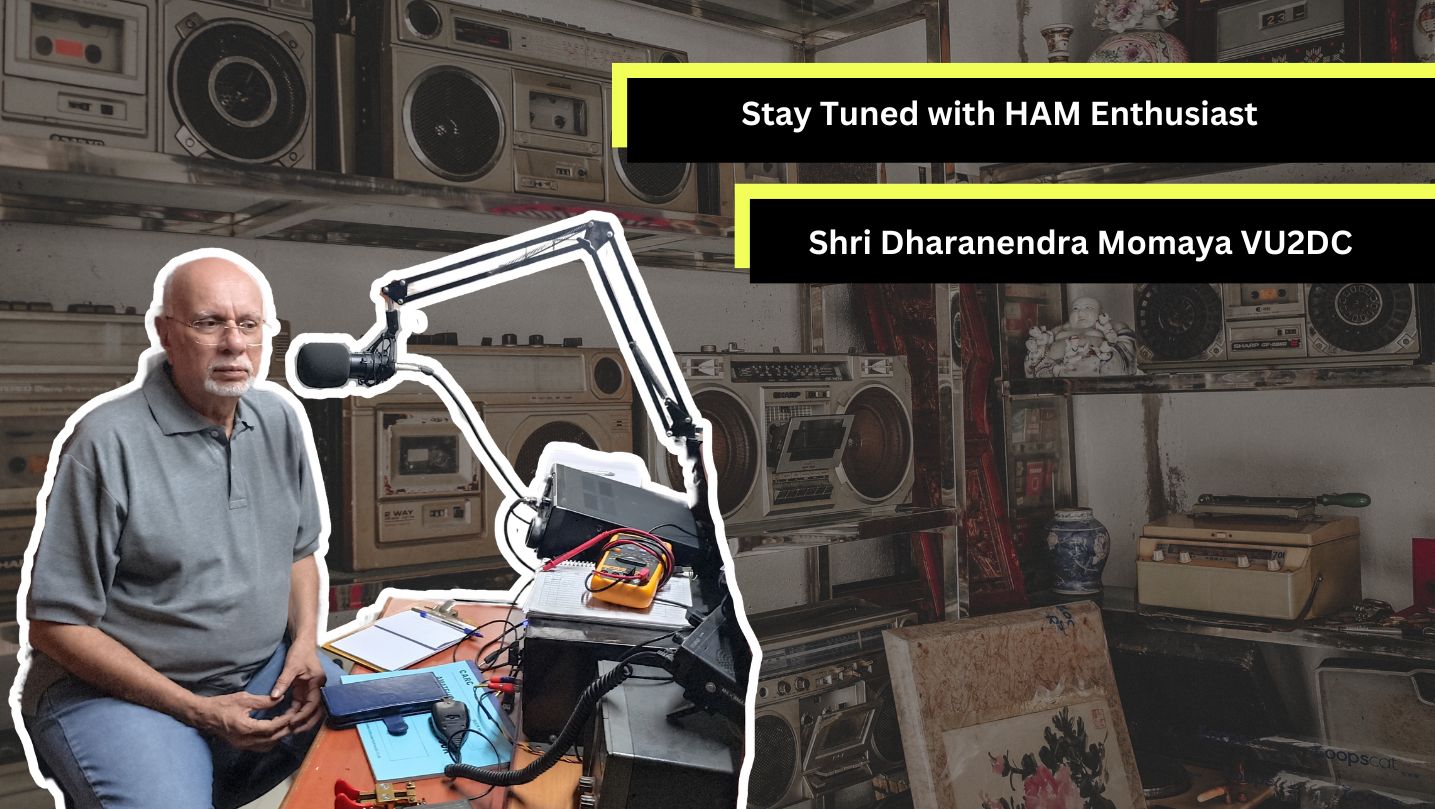
Hobbies often define individuals, and there are those individuals who, in turn, define their hobbies. On the quest to discover unique hobbies, our journey led us to Shri Dharanendra Momaya VU2DC– an amateur radio operator, a hobby photographer, a music aficionado, and a person deeply immersed in the world of diverse interests. As we savored a delightful cup of tea accompanied by the Mumbai-based snack known as 'Butter,' we had Shri Dharanendra Momaya Ji enlighten us about the HAM Radio.
Amateur radio, commonly referred to as Ham radio, entails the utilization of the radio frequency spectrum for non-commercial activities such as the exchange of messages, wireless experimentation, self-training, private recreation, radiosport, contesting, and emergency communications. The amateur radio service, governed by the International Telecommunication Union (ITU) through the Radio Regulations, is subject to National Government oversight. Operational characteristics are regulated, and individual station licenses, including a unique call sign, are issued. To qualify, operators must pass a government test demonstrating technical radio knowledge and legal understanding of radio regulations. Amateurs operate within designated frequency bands, employing various communication modes, enabling global or even space-based transmissions. In some countries, operators may also relay radio communications between computers or transceivers connected to secure virtual private networks on the Internet.
In 1983, Shri Dharanendra Momaya embarked on his HAM radio journey in his hometown, Tirupur, marking the distinction of being the first HAM radio operator from the region. Intrigued by a pamphlet, he harbored a keen interest in HAM radio and eventually seized the opportunity to delve deeper into the hobby, obtaining a license after a few years. Since then, HAM radio has become his daily pursuit, enabling him to engage with diverse individuals, explore cultures, exchange ideas, and take pride in contributing during national emergencies.
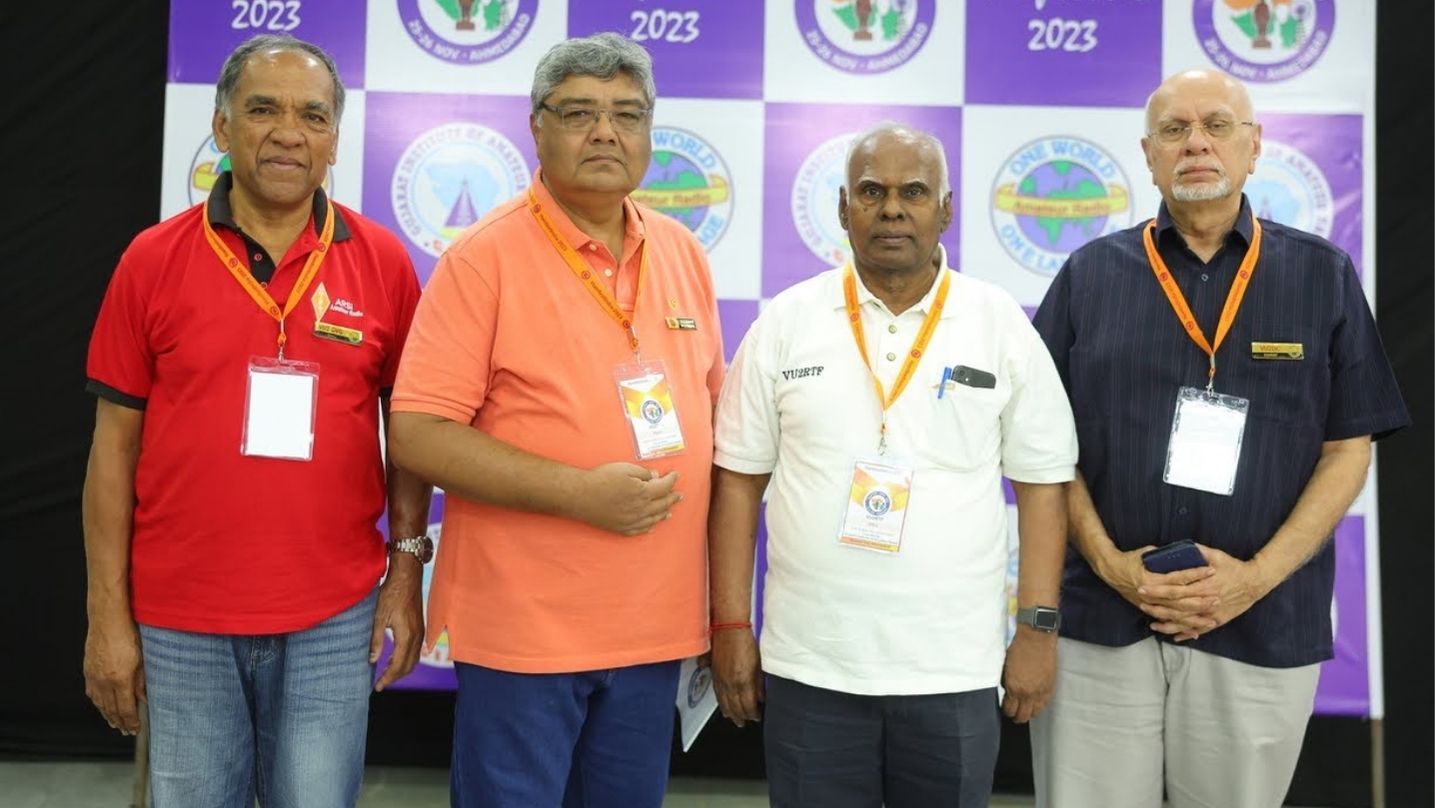
Shri Dharanendra Momaya Ji with his HAM friends
Shri Dharanendra Momaya Ji shared with us the fascinating history of HAM operators during World War II, where they ingeniously crafted their HAM setups, including transceivers and antennas, from salvaged materials. While contemporary operators have the option to purchase commercial setups, there remains a community of enthusiasts who find joy in building their own setups. When enquired about the cost of such a DIY HAM setup, he explained that it can range from a modest Rs. 500 to a substantial investment exceeding 5 lakhs rupees.
While the concept of HAM initially seemed distant to us, we were surprised to learn that it's quite prevalent. Shri Dharanendra Momaya Ji revealed that there are currently 50 to 60 licensed HAM operators in Coimbatore, with 8 to 10 actively engaged in the hobby. Reflecting on his past experiences, he recalled prominent HAM operators at both regional and national levels, such as Mr. GD. Gopal and Mr. Rajiv Gandhi. Interestingly, he also highlighted international figures like Former King Hussein of Jordan, Former King Bhumibol Adulyadej of Thailand, and the King Chogyal of then-Sikkim who were notable HAM operators on an international scale.
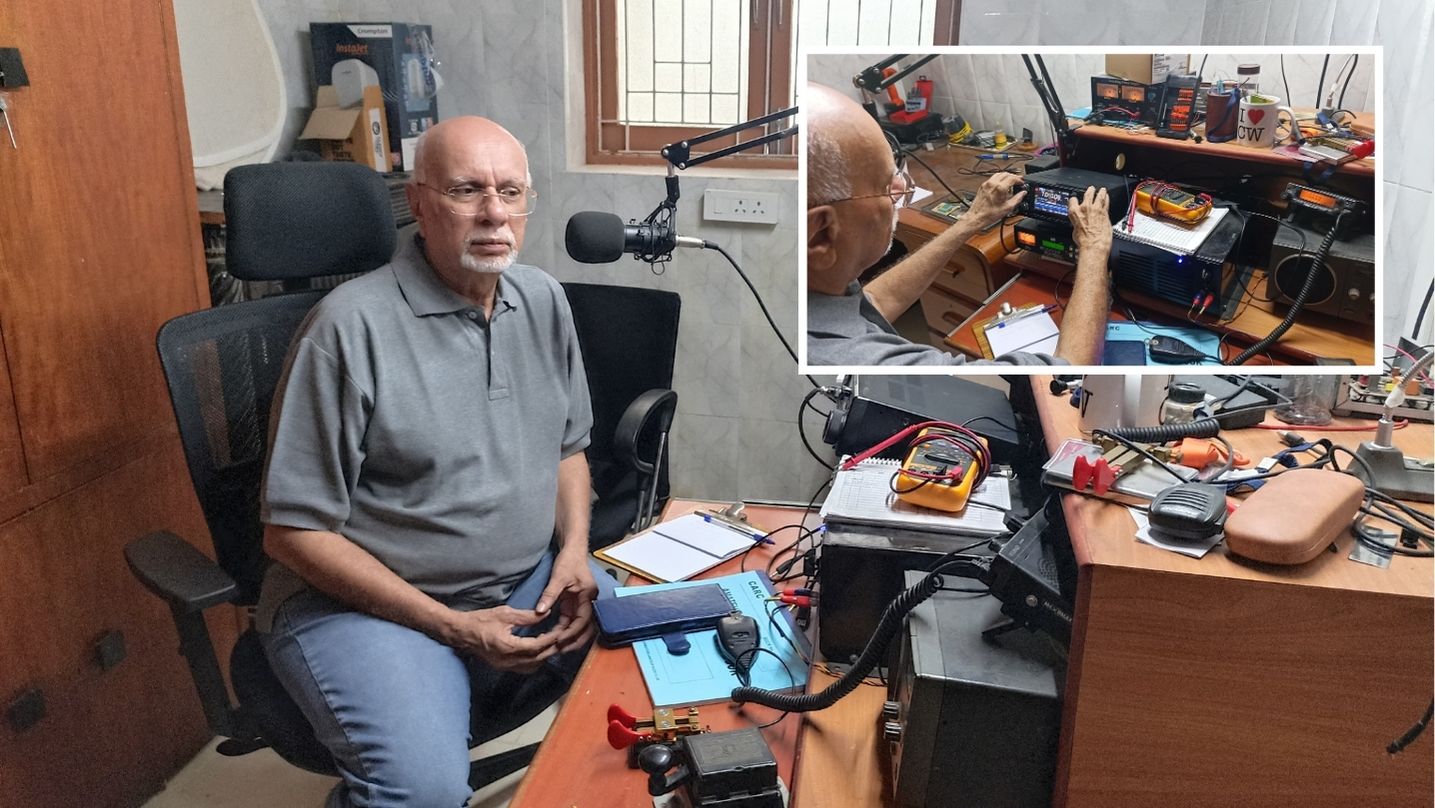
As our tea cups were emptied, we transitioned into a compact room, aptly named 'The Shack,' resembling a studio. Stepping into this space was like entering a fusion of science fiction and a radio station, unveiling the elaborate setup of the HAM radio system. The configuration included a transceiver, a customized microphone arranged for Shri Momaya Ji's convenience, a handheld receiver traditionally used in lieu of a microphone, a foot pedal for transmission control, and a repeater facilitating signal reception and transmission over a broader range. In essence, it's a setup that any modern youngster would flex about if they were fortunate enough to possess one.
Satisfying our appetite for excitement, the languages and codes employed by HAM operators add an intriguing dimension. An amateur radio operator adopts a call sign on the air to legally identify themselves or their station. The structure of a call sign, as outlined by the ITU, comprises three components: the initial two alphabets signify the country, followed by a number (typically 1 or 2) denoting the class of operation, with 1 being the highest. The final part is unique to the license holder. In instances of fading signals, operators resort to Morse code for communication. However, the once-vibrant skill of Morse code finds itself fading into obscurity. We should also remember that Morse code is the only two way mode of communication during emergencies, which is now facing existential crisis. The narrative whispers of awareness and interest has to be kindled to reawaken this invaluable skill. Additionally, to circumvent ambiguity, HAM operators use specific code words, designated for each alphabet, such as alpha, bravo, charlie, delta, and so forth.
Shri Momaya Ji generously offered us a demonstration, facilitated by his HAM friend Rajesh, who went the extra mile to join us online for the session from Bangalore. The typical exchange between HAM operators, discussing weather, time, and status, seemed almost cinematic to us. The experience was nothing short of brilliant, leaving us with valuable insights into the world of HAM radio. During this moment of curiosity, a lighthearted question crossed our minds, "Can we communicate with aliens through HAM?" Shri Momaya Ji responded with a smile, acknowledging that while it might be technically feasible, practical communication faces challenges due to language barriers, technological limitations, and other obstacles from both ends, provided the aliens are real.
In addition to being a HAM operator, Shri Momaya is also a dedicated hobby photographer. He initiated his photographic journey with a black and white camera, facing the challenges of processing color photos, which required sending them to Chennai and waiting for their return via courier—a time-consuming process. However, his passion for photography experienced a renaissance when his children gifted him a modern digital camera. After a hiatus of nearly 30 years, he expressed that he is now rediscovering the joys of photography. His photographic works can be explored through this link: https://www.flickr.com/photos/djmomaya/with/9694958089
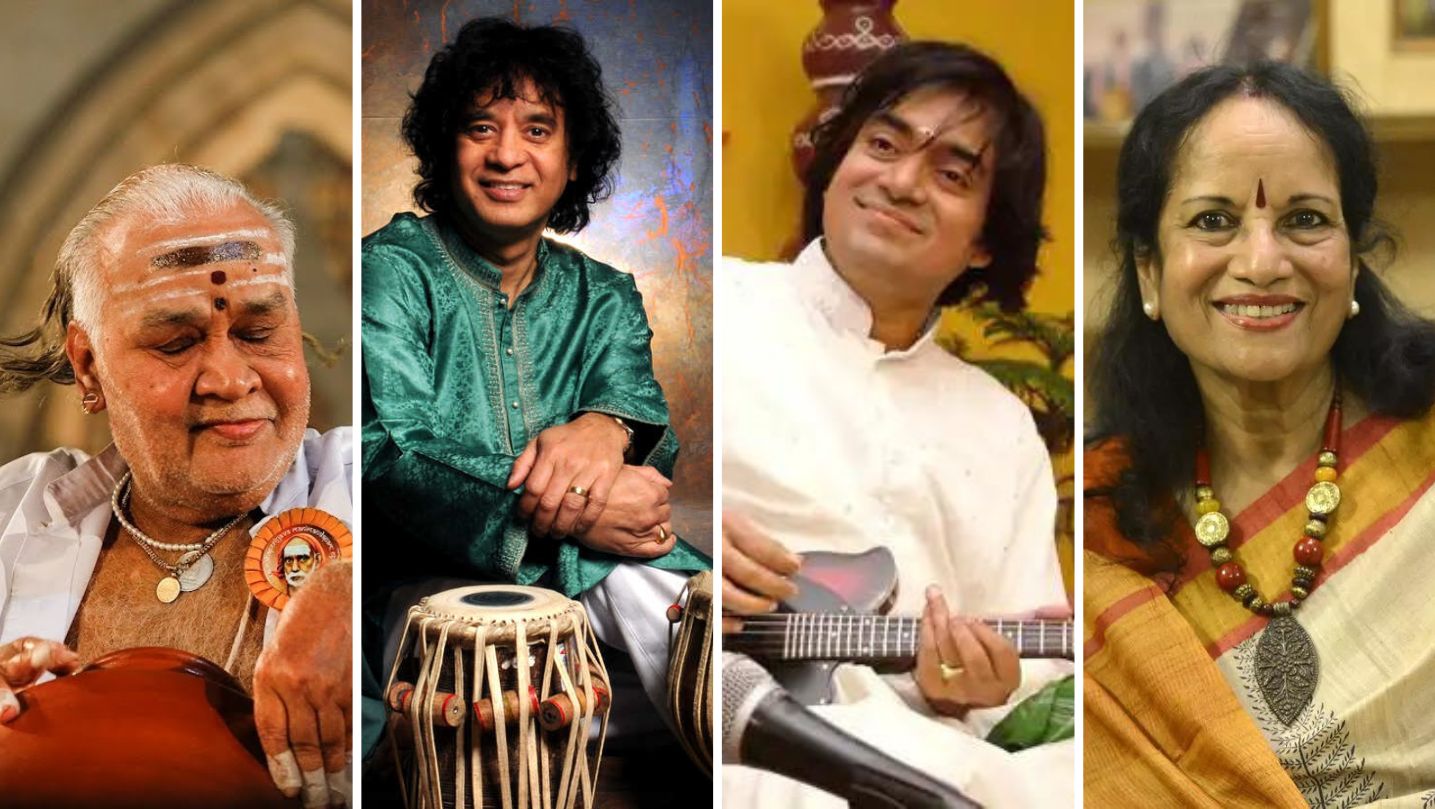
Shri Momaya's profound passion for music left us in awe. His appreciation spans across various genres, including Carnatic, Hindustani, fusion, and Classical music. Notably, he took pride in being involved in organizing programs with renowned artists such as Vikku Vinayakram, Zakir Hussain, and Mandolin Srinivas. Drawing distinctions between Carnatic and Hindustani music, he highlighted the strong grammatical foundation of Carnatic music and the exceptional pitch precision in Hindustani music. Acknowledging Vani Jayaram as a pioneer excelling in both styles, he recounted a memorable fusion music experience during a concert in Coimbatore Cosmopolitan Club, featuring a French drummer harmonizing seamlessly with ghatam and mridangam artists.
Expressing a desire for greater musical appreciation in Coimbatore, he noted the city's relatively few musicians, citing an exception in the prodigious Carnatic vocalist Kaamyasri. Shri Momaya also emphasized the impact of Indian musicians playing abroad, where foreigners often marvel at their musical expertise—a sentiment reciprocated when foreigners showcase their skills in India.
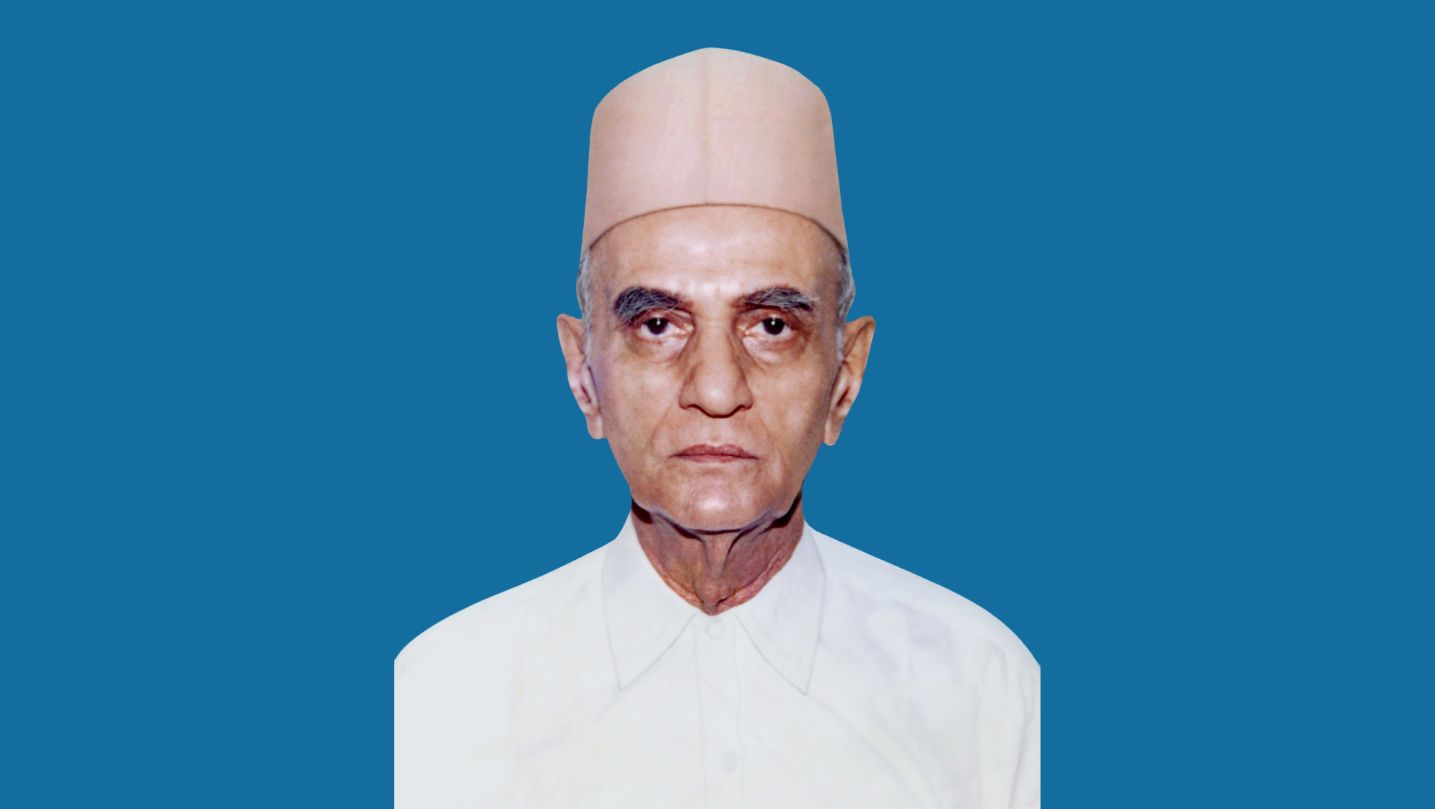
Shri Jethubhai Govindji - Father of Shri Dharanendra Momaya Ji
In response to our inquiry about his passion for hobbies, Shri Momaya Ji shared that the business environment in Tirupur during his formative years provided him with ample free time to engage in pursuits beyond the ordinary. He attributes his enthusiasm to his father, Jethubhai Govindji, a noteworthy figure in Tirupur. Shri Jethubhai Govindji played a pivotal role in establishing several educational institutions in the region, including Chikkanna College. Moreover, he was a visionary behind the Tirupur Cooperative House Mortgage Bank, a benevolent initiative that aided numerous individuals in the area.
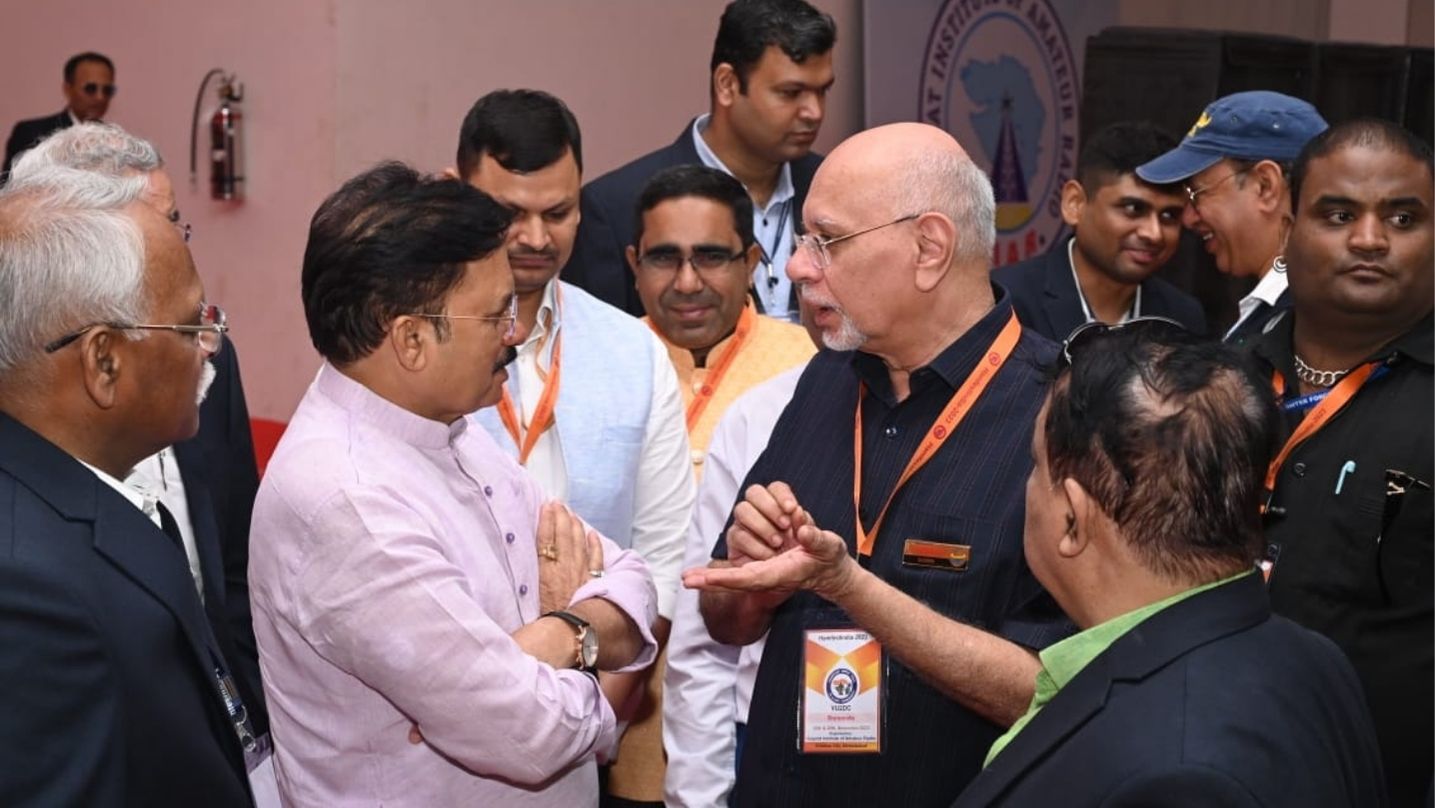
Shri Dharanendra Momaya Ji explaing a point to Minister of State for communication Shri. Devusinh Chouhan at Hamfest 2023, Ahmedabad.
Shri Momaya Ji further remarked that hobbies like stamp collection, coin collection, and HAM radio are gradually waning. Intriguingly, HAM operators organize HAM fests and fairs in various cities, creating opportunities to connect with new HAM enthusiasts, exchange insights, and acquire technology that revitalizes the HAM radio hobby. While it is fascinating to discover a hobby so unfamiliar to us, it is disheartening to learn about the challenges faced by HAM operators, including restrictions on placing HAM towers in residential areas, making it challenging for them to pursue their passion with ease.
As we discovered the deeper aspects to HAM radio, photography, and music through the lens of Shri Dharanendra Momaya Ji's experiences, we are reminded of the delicate balance required to preserve our cultural heritage, personal passions, and hobbies in modern life. Through his stories, we find not just a chronicle of individual pursuits but a reflection on the enduring spirit of curiosity and creativity that transcends time and technology. No wonder Happy and Hobby starts with the same letter. May the HAM enthusiasts tribe grow!
|| Dharmo Rakshati Rakshitah ||
Note : For those intrigued by HAM radio and contemplating how to explore it personally or acquire a license, Shri Momaya Ji offered a solution. He shared a link, https://arsi.info/faq/ , where one can find comprehensive information about HAM, including learning opportunities and the licensing process.
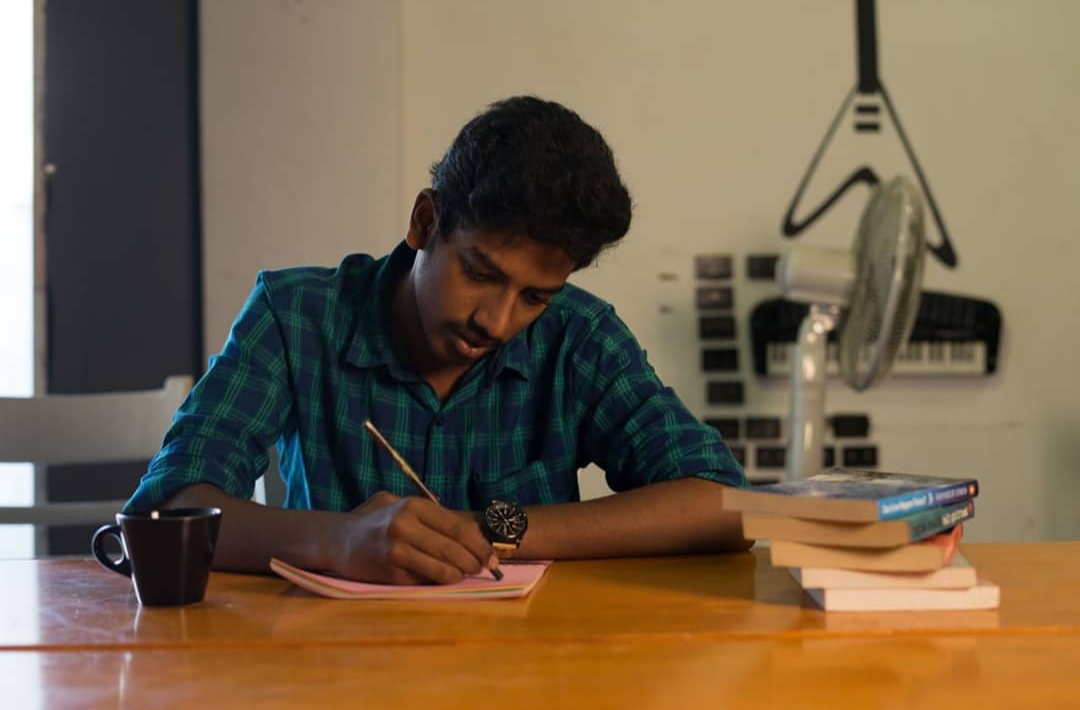 Vigneshwaran, Senior Correspondent of TheVerandahClub.com is both a skilled digital content writer and marketer by profession, as well as an avid independent writer driven by his passion. His literary talents extend to crafting beautiful poems and captivating short stories. In addition to these creative pursuits, he has also authored a book titled "Halahala," which can be found on Wattpad.
Vigneshwaran, Senior Correspondent of TheVerandahClub.com is both a skilled digital content writer and marketer by profession, as well as an avid independent writer driven by his passion. His literary talents extend to crafting beautiful poems and captivating short stories. In addition to these creative pursuits, he has also authored a book titled "Halahala," which can be found on Wattpad.
NEXT ARTICLE

"A staggering one in five children in India is pre-diabetic," revealed Mrs. Swathy Rohit, the visionary founder of Coimbatore-based digital health p...
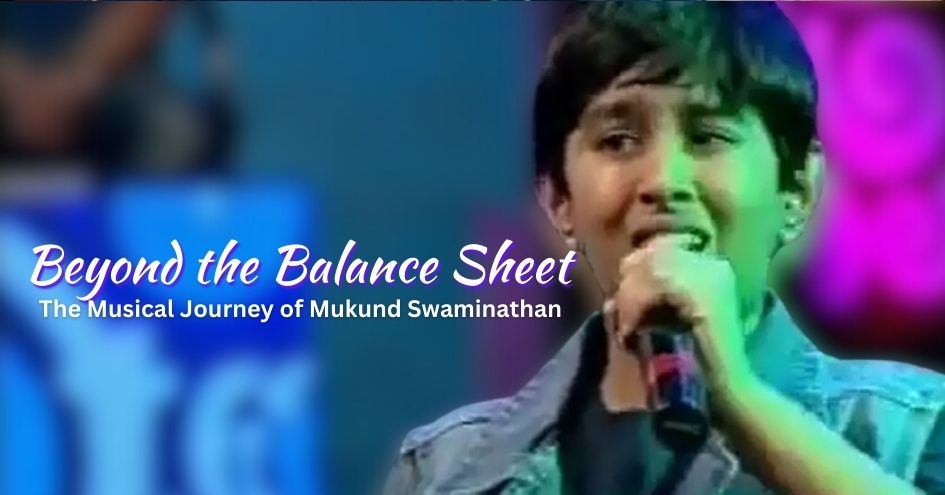
Where a rhythmic cadence of music blends seamlessly with the structured world of auditing, we found Mukund Swaminathan, a 26-year-old maestro who has...
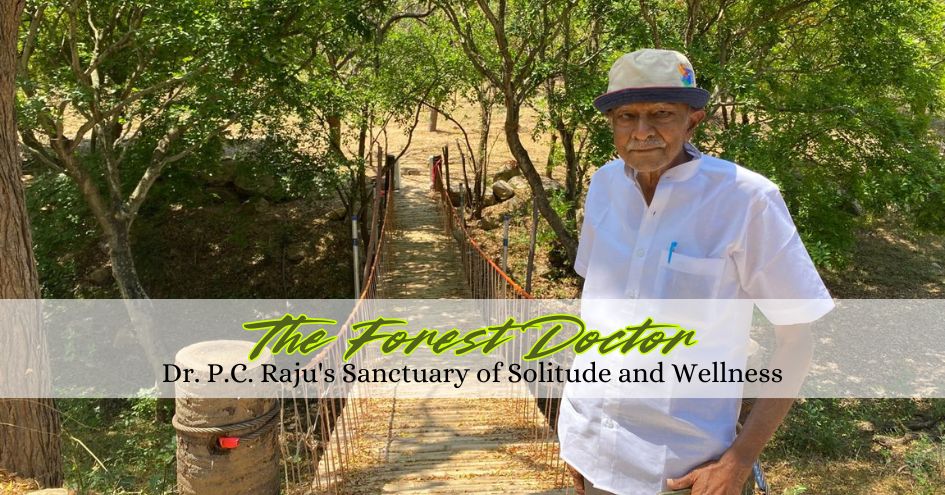
"Life doesn't offer retirement, only professions do. While I've stepped away from my practice, I haven't retired from living. No one truly retires whi...